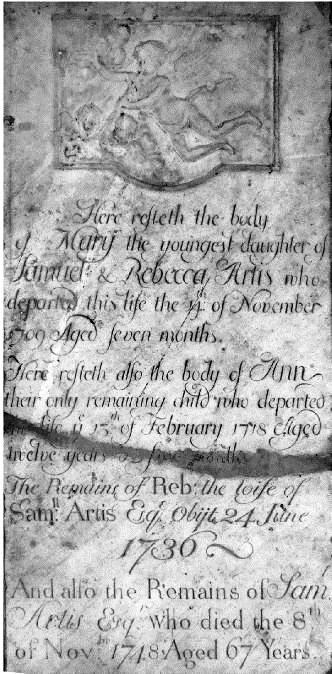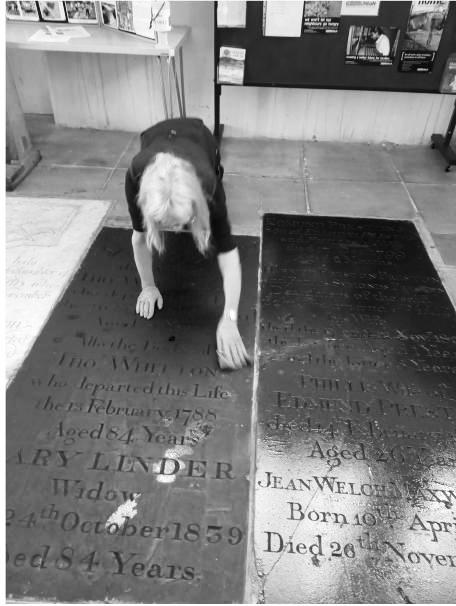|
Gravestones in the floor at the Minster
 In 1957, a plan of the surviving legible gravestones in the church floor after the bombing of the church was made before they were removed. This plan has been transcribed and is available at : In 1957, a plan of the surviving legible gravestones in the church floor after the bombing of the church was made before they were removed. This plan has been transcribed and is available at :
www.greatyarmouthlocalhistoryandarchaeology.com/copy-of-monographs
Only a few gravestones were salvageable, and these were placed in the north aisle and in the south transept. The rest were beyond repair and were discarded. The many vaults that they covered were filled with concrete and a new floor of 5,400 paving slabs was laid
In 1840, there were over 500 memorial monuments, tablets and stones within the church which related a history of the town. The earliest was a stone commemorating John Couldham, dated 1620
Along the west wall of the north aisle are a set of gravestones salvaged from the old church. Amongst these stones is one to Revd Seymour Love, a Fellow of All Souls’ College, Oxford, who died in Great Yarmouth in 1793
 Another is to Samuel Artis, who was a merchant and postmaster of Great Yarmouth. Ives writing in 1736 said “Samuel Artis brought home his lady from London, where he was married; she is next August, 15 years of age and he is 66 years old”. His previous wife, Rebecca, had died earlier in the year. When George II landed at Lowestoft in 1737, Samuel Artis rushed to Lowestoft to offer the king the loan of four carriage horses, which took his majesty to Saxmundham. Artis was also a magistrate and in 1734 when a poor fisherman, John Darby, threw a stone at Lord Hobart’s carriage he was sentenced by Artis to be whipped and have his head and hands placed in the stocks. After a further six days in jail, he was made to kneel before the Mayor and beg for pardon Another is to Samuel Artis, who was a merchant and postmaster of Great Yarmouth. Ives writing in 1736 said “Samuel Artis brought home his lady from London, where he was married; she is next August, 15 years of age and he is 66 years old”. His previous wife, Rebecca, had died earlier in the year. When George II landed at Lowestoft in 1737, Samuel Artis rushed to Lowestoft to offer the king the loan of four carriage horses, which took his majesty to Saxmundham. Artis was also a magistrate and in 1734 when a poor fisherman, John Darby, threw a stone at Lord Hobart’s carriage he was sentenced by Artis to be whipped and have his head and hands placed in the stocks. After a further six days in jail, he was made to kneel before the Mayor and beg for pardon
One of the other gravestones commemorates the family of Edmund Preston, who lived at Milmount House, North Quay. He was a solicitor and Mayor in 1818 and 1830
Another stone is engraved commemorating the Bernard family. Bernard died in 1699 and was an alderman of the town named in a charter granted to the Corporation of Great Yarmouth by Charles II in the 36th year of his reign. The stone relates that Robert’s wife died aged 47 years having borne 14 children. Robert Bernard’s son, Leonard, was also an alderman
The slate gravestones have now been cleaned using turpentine and linseed oil and will receive several layers of traffic wax and then polished by the Minster’s energetic churchwarden
this article and photos courtesy of Parish Life magazine
Do you have a news story or forthcoming event relating to Christians or a church in Great Yarmouth or surrounding district?
If so, email judith.edmonds@ntlworld.com with details and, if possible, a suitable picture(s)
|
|
|
|